[ad_1]
When it comes to email marketing, brands primarily focus on fine-tuning offers or drip campaigns. More than any of these, what really matters most is your email’s ability to land in the recipient’s inbox. If you can’t reach your audience in the first place, there’s no point in including emails in your marketing wheel.
Email deliverability is a comprehensive metric that measures a sender’s ability to consistently deliver emails into a particular folder. This is a secret superpower that dictates the campaign’s effectiveness, which might end up impacting sales and overall revenue.
—
Looking to build out and execute an effective email marketing strategy of your own?
—
However, this metric is often overlooked: The average email deliverability is about 79.6%, which means more than 20% of all emails end up in spam folders. There’s work to be done, and in this article, we will share 10 red flags that plunder email deliverability rates:
1. Not Warming Up the IP
If you’re setting up an email campaign from a brand-new IP address, that failure to warm up the IP address beforehand can plunge your deliverability rate. That’s because email servers cannot trust a brand-new IP with no sender history for mass emails.
To warm up your IP address, you need to build a sending schedule and gradually add email volume over a month. This way, ISPs will recognize your sending pattern and trust your emails. It’s possible to manually increase the volume to establish a reputation, but it can be a hassle initially. Instead, you can use dedicated platforms to do the job for you.
2. Buying Email Lists
Before creating email sequences, you need a list of subscribers. Buying an email list from web scrapers is the worst thing you can do for your business. List providers use questionable tactics to acquire email addresses they later sell to businesses. You don’t know the origin of the list, and it could contain tons of irrelevant and outdated addresses that might impact deliverability. On top of that, by purchasing these lists, you can run into GDPR or CAN-SPAM complications.
Instead of buying lists, put efforts into building an organic list of subscribers. You can ask for email permission on the checkout page because recent buyers are more open to brand communication. You can also run social media competitions, use whitepapers or reports as gated content, or run ads for email sign-up pages. On top of that, you can use an email lookup service that processes data in accordance with GDPR and CCPA laws. Building an organic, engaged list is a long-term process, but the rewards offset the efforts.

3. Not Using Double Opt-In
Encouraging prospects to join your email list should be a two-step process. However, most marketers don’t use email confirmation to verify intent. When someone subscribes to your emails, make sure you ask them to confirm their choice by following the confirmation email. This way, you can filter out uninterested subscribers and build a highly engaged list. Faculty uses a minimal opt-in email to confirm subscription.
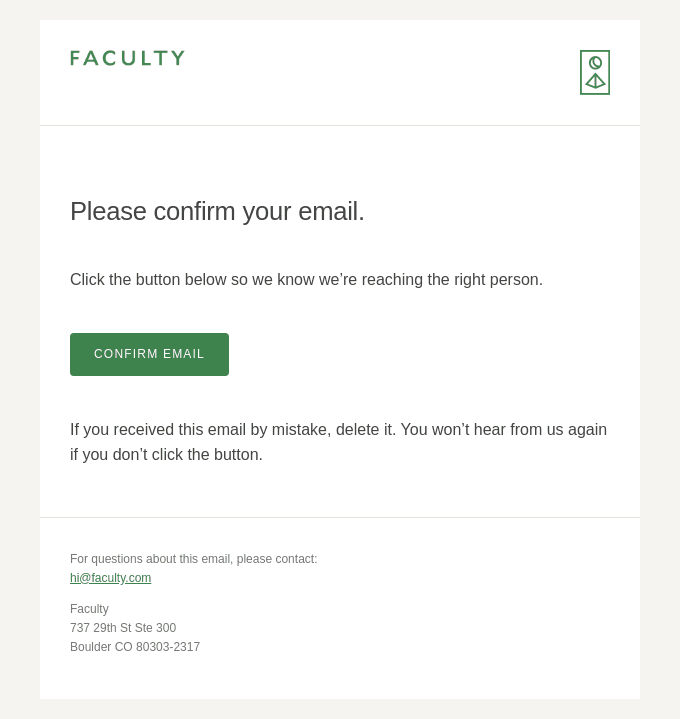
Thanks to an additional step, double opt-in can run the risk of losing conversions. But if you prioritize highly motivated prospects over raw numbers, double opt-in should help you steer clear of spam labels. Make sure that the sign-up page clearly mentions the concept and the steps of double opt-in and that your server is set up to send confirmation emails within seconds.
4. Ignoring Email Verification
Even after acquiring subscribers through legitimate channels, you’ll end up with a few addresses that are unable to receive your email. People often change emails along with their jobs, and email service providers frequently suspend inactive addresses. This becomes a bigger issue for B2B marketers and brands that buy email lists or decide to email old prospects. Constantly mailing to inactive addresses will increase your hard bounce rate and spam complaints, which will impact deliverability.
To keep your email list lean and active, you need to verify addresses before email blasts. You can use an email verifier tool to make sure a specific email address is active and that servers are able to accept emails.
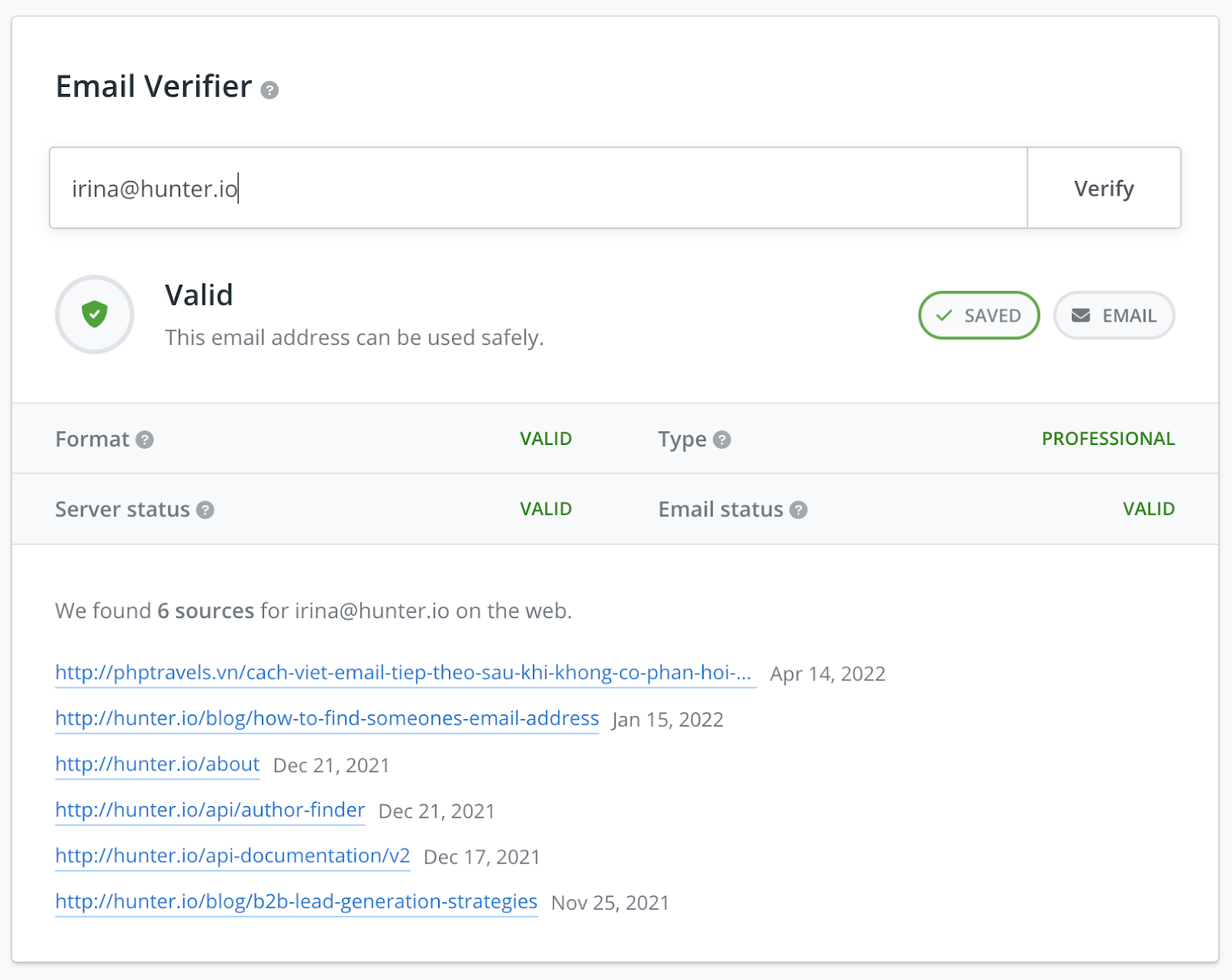
5. Not Using a Clear Unsubscribe Option
Email marketers often put a lot of effort into starting their journeys on the right foot, but they rarely make it easy to part ways. When the needs are met or priorities change, subscribers may want to leave an email campaign, and because 0.1% is the average unsubscribe rate, not much harm will be done to the campaign. The trick is to let them easily unsubscribe.
Burying the “unsubscribe” button under other elements or completely omitting it can harm marketing campaigns. In the absence of a clearly defined opt-out process, people will end up marking your emails as spam, which will hurt your deliverability. Instead, clearly highlight the unsubscribe option and reach out to disengaged addresses to update them about the opt-out process.
Unsubscribe options are important for any type of email — be it cold outreach, onboarding sequence, or marketing newsletter. Here is an example of how at Hunter we use a quick unsubscribe sequence in our cold affiliate recruitment emails:
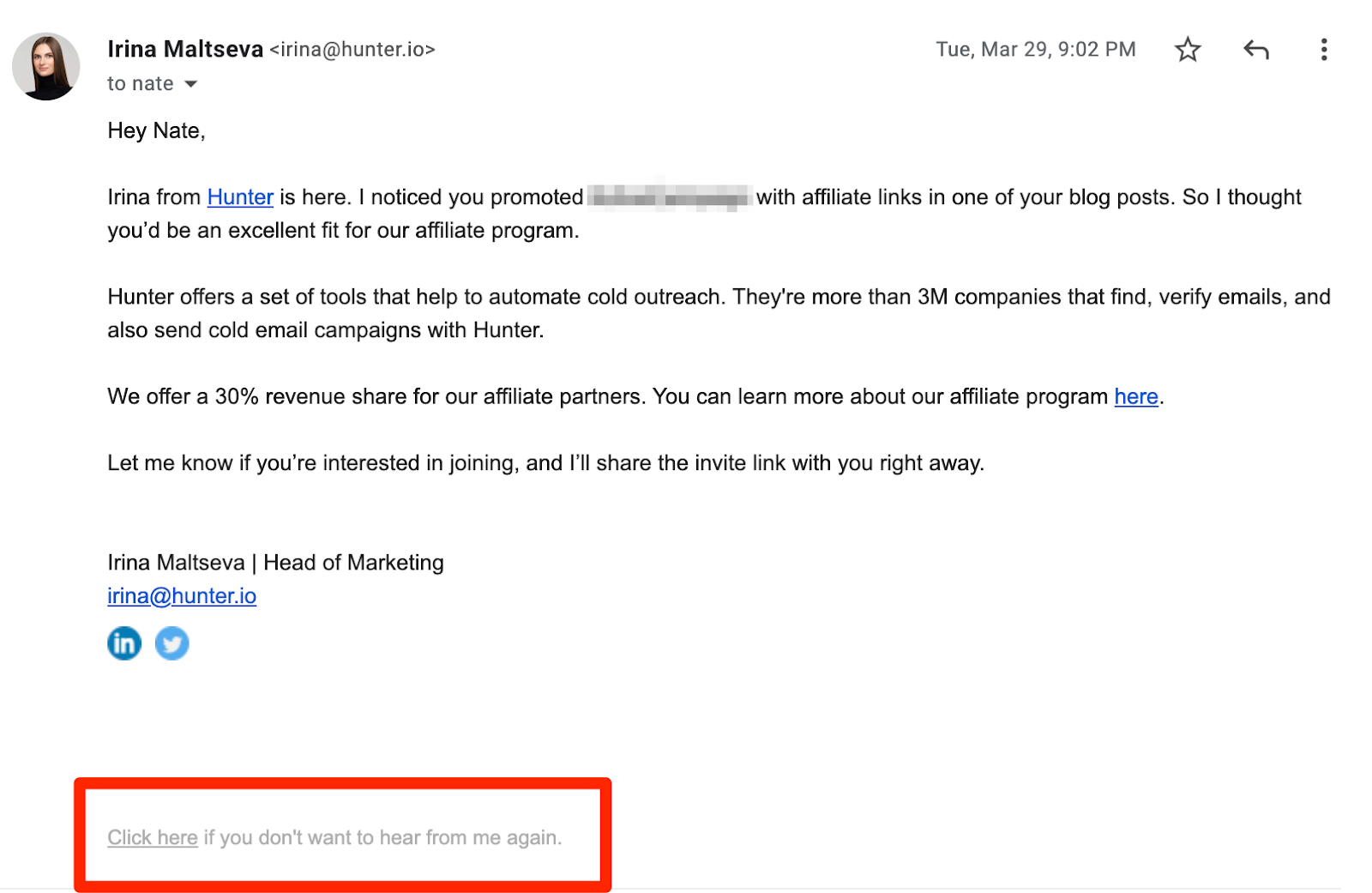
6. Not Analyzing Your Email Bounces
When a full-fledged email campaign starts rolling, you may come across a few bounce alerts. There are two types of email bounces: hard bounce and soft bounce. Hard bounce refers to a permanent failure to deliver an email due to the address being nonexistent or the sender’s address being marked as spam. In contrast, soft bounce covers temporary issues such as full mailboxes or large emails that can be solved with tweaks.
Repeatedly sending emails to bounced addresses is harmful, and that’s why measuring the bounce percentage is important. Anything more than 2% deserves your attention, as a high bounce rate pulls down deliverability. You can start by verifying and pruning your list and avoiding spam triggers to improve bounce rate.
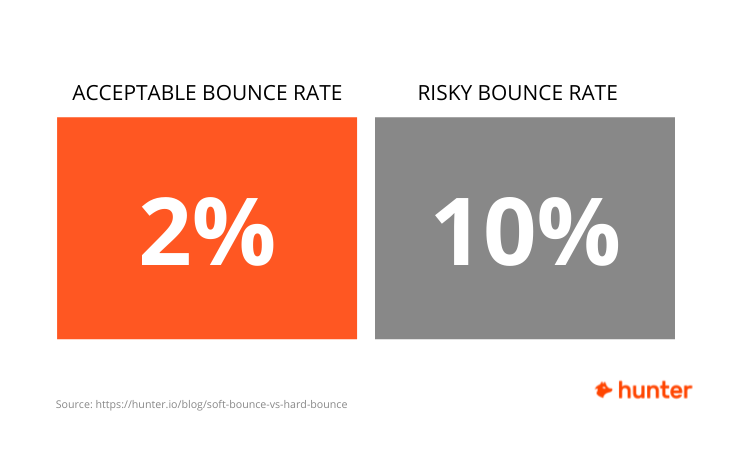
7. Sending Emails From a Personal Gmail
As a business, your emails should reflect reliability and professionalism. Sending emails from personal accounts is a shortcut to spam folders. Not only do these emails lack unsubscribe buttons, but they also look fake. For instance, recipients would be much more inclined to open an email from Twitter from the address [email protected] than [email protected]. This is specifically true if you’re doing cold outreach at scale. To keep things professional at your company, consider signing up for a Google Workspace account or using Gmail as a mail client.
8. Writing Deceptive Subject Lines
Considering that 69% of people mark an email as spam just by reading the subject line, it’s crucial to get your subject lines right. Here are a few rules of thumb when it comes to writing open-worthy subject lines:
- Do not oversell yourself with exaggeration or hyperbole.
- Keep the subject line short and precise, preferably between four and eight words.
- Be relevant, authentic, and timely.
- Write subject lines in a way to inspire curiosity and give a sneak peek into the value readers will get from the email.
- Experiment with exclamations and emojis, but don’t use all capital letters or sound overly excited.
If you mislead people with subject lines, they’ll swiftly send your email to the spam folder, which will hit your deliverability. These are two emails freshly unearthed from the spam folder.

9. Including Too Many Visuals
Visual elements play a big role in deciding email deliverability, especially for cold outreach. While it’s a good idea to balance HTML texts with images to create a nice experience for readers, solely relying on images can be perceived as a spam tactic.
Spammers have traditionally used images to bypass spam content triggers. But ESPs of today place more importance on sender reputation than content, so you should maintain a balance between texts and images. If you’re doing a cold outreach campaign, make sure to keep the email body short and text-based.
Emails with heavy visuals (illustrations, GIFs, videos, or even user-generated visual content) can lead to soft bounce, but that’s not the only issue. Many mailbox providers don’t show images by default, so if you’re using a long image as the email body, you’re losing out on engagement. For example, this is how an email looks when a recipient disables auto-image load — not great for email marketing.
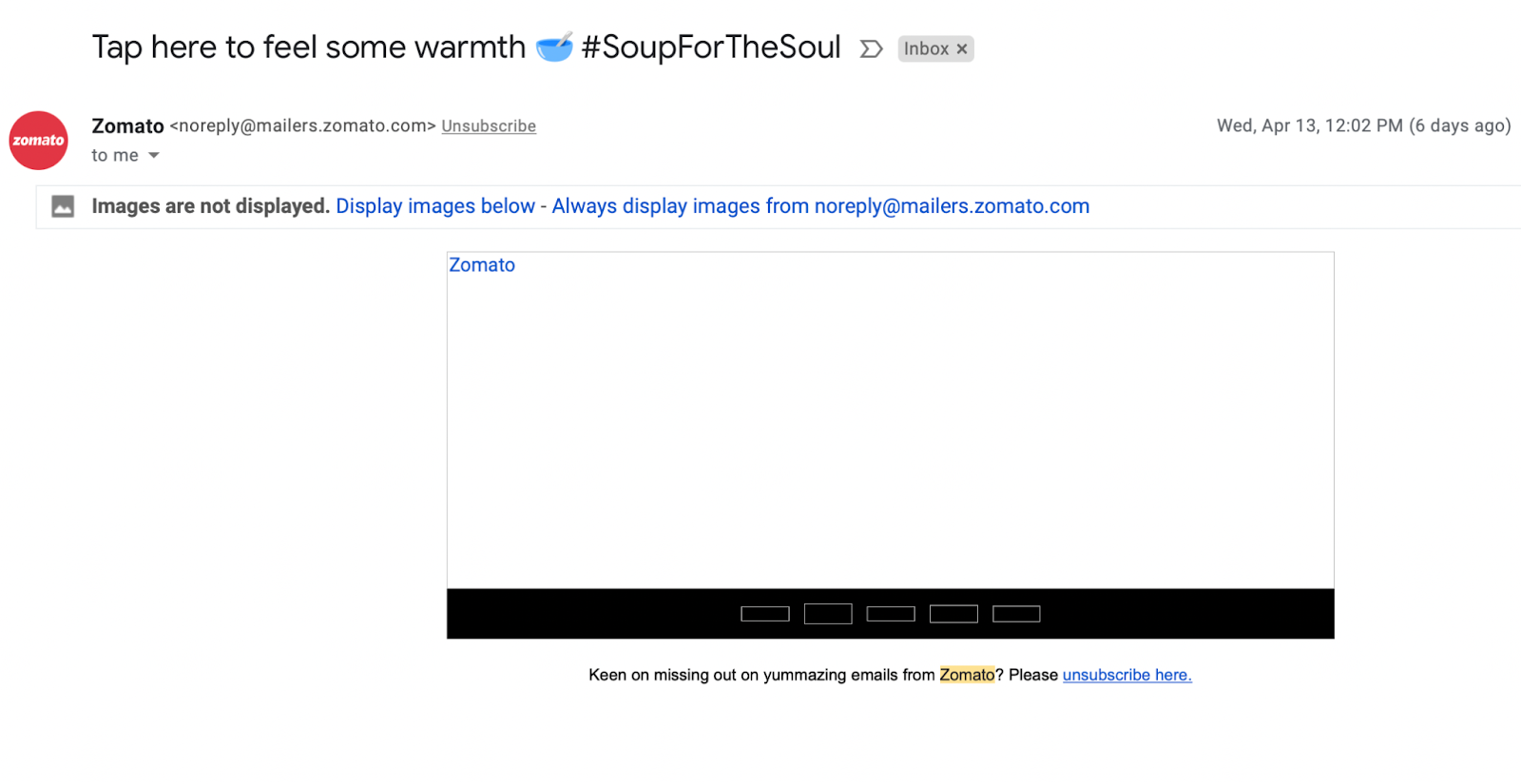
10. Using URL Shorteners
Similar to heavy visuals, URL shorteners have been predominantly used by scammers to hide malicious links. If you’re adding links to your email body, don’t use an URL shortener. You should also avoid pasting the entire link as-is. Instead, embed or hyperlink it with appropriate texts. Calls to action should have embedded links that lead to reliable and verifiable websites, which should help deliverability.
When it comes to improving click-through rate, use email formatting to improve readability and mobile-friendliness and constantly A/B test CTAs.
Email deliverability is essential to the success of marketing campaigns. Apart from focusing on technical aspects such as IP and domain warming, and SPF, DKIM, and DMARC authentication, these few factors should help you reach the primary inboxes of most recipients.
Want to learn more of the dos and don’ts of email marketing? Download your free guide below!
[ad_2]
Source link


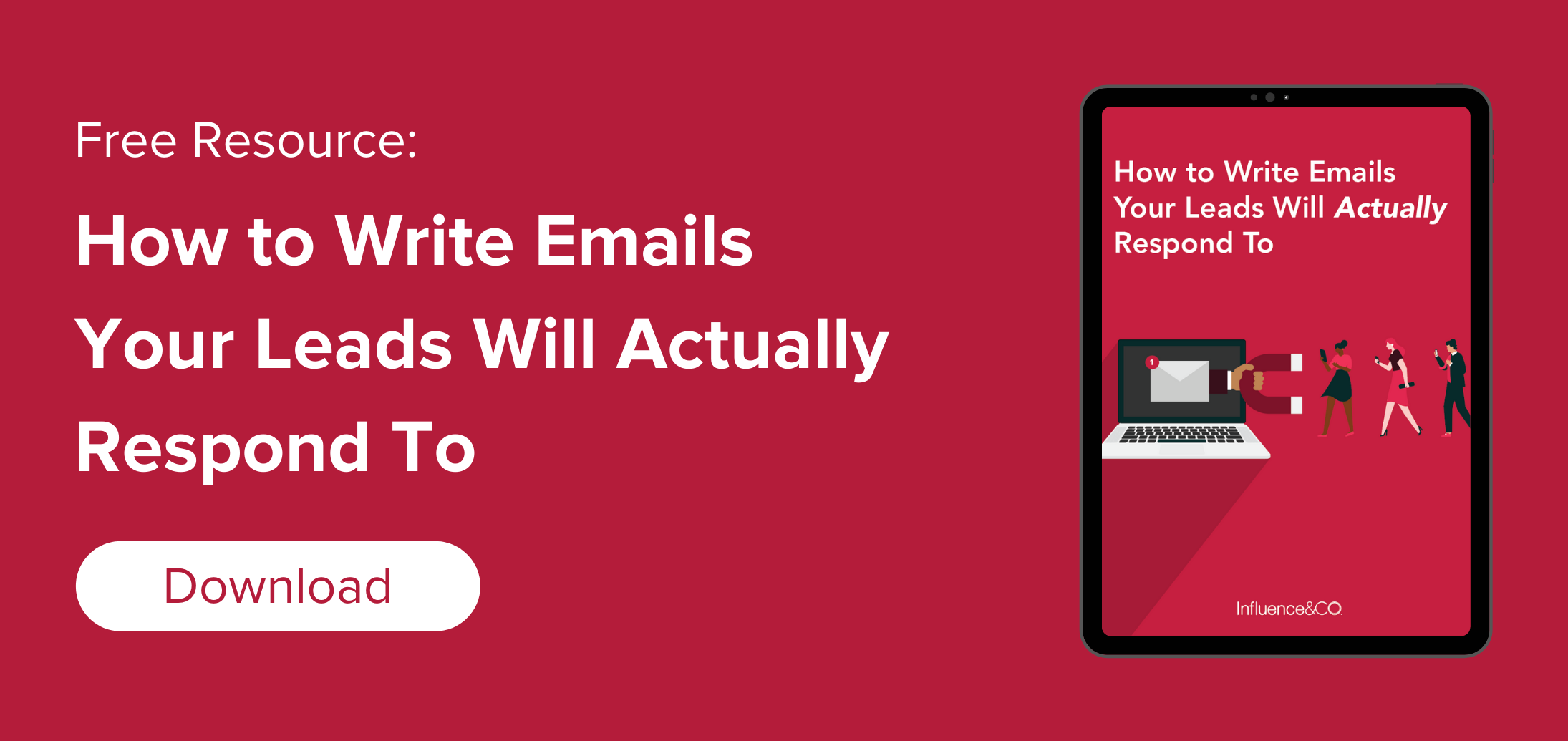
More Stories
The Ultimate Financial Education Guide for All Ages
Financial Education Secrets to Master Your Money
Essential Steps for Financial Education Success